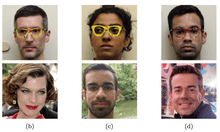An official watchdog has issued a fresh warning over the police’s use of more than 20m facial images on their searchable databases, more than five years after the courts ruled that the inclusion of images of innocent people was unlawful.
Paul Wiles, the biometrics commissioner, says in his annual report that the police’s use of facial images has gone far beyond their original use for custody purposes and forces are using facial recognition software to try to identify individuals in public places.
In one recent example, the Metropolitan police used facial imaging to check those attending the Notting Hill carnival against a force watchlist.
“Facial images are just the first in a new wave of biometrics. I am aware that the police are already experimenting with voice recognition technology and others such as iris, gait and vein analysis are commercially available,” says Wiles in his annual report published on Wednesday.
He notes that while facial images have been used by the police since the birth of photography, the development of digital images, their storage on a national database, the use of powerful searching algorithms and the deployment of such technologies in public spaces transforms facial images into something new.
Wiles says that unlike DNA and fingerprints, images can be taken without the subject’s knowledge. Facial images of about 90% of the adult population already exist in passports and driving licences.
“Facial images are a powerful new biometric but the acceptance by the public of their use for crime control purposes may depend on the extent to which the governance arrangements provide assurance that their use will be in the public interest and intrusion into personal privacy is controlled and proportionate,” writes Wiles.
His annual report says that as of July 2016 there were 19m facial images on the police national database, of which 16.6m had been enrolled in a facial image recognition gallery and were searchable using recognition software. The Met holds a further “extensive collection” of its own, as do other forces such as Leicestershire.
A high court ruling in 2012 declared unlawful the retention by the police of images of innocent people they had arrested or questioned but who had never been charged or convicted of any offence. A Home Office review ordered by Theresa May when she was home secretary was published this February, which required the police to delete images but only application from an individual “unconvicted person”.
The biometrics commissioner says the review left all the key issues about management, interpretation, governance and technical quality in the hands of the police without any independent oversight or reassurance to the public, especially those the high court described as “entitled to the presumption of innocence”.
“It is now almost five years since the court held that the police retention of facial images was unlawful, yet we still do not have a clear policy in operation to correct that situation,” says Wiles.
The Big Brother Watch campaign group said they welcomed the biometric commissioner’s warnings and concerns about the ongoing creation and retention of facial biometrics and facial recognition technology by police forces across the country.
“It is of very serious concern that the Home Office appear to be so unwaveringly set on embedding facial biometric recognition technology into policing without debate, regulation, legislation or independent scrutiny,” said its chief executive, Renate Samson.
“Rather than throwing millions of pounds at the building of such intrusive capabilities, the Home Office should be investing in updating police IT systems to ensure that the hundreds of thousands of innocent people’s custody images and facial biometrics are deleted automatically as soon as they are released without charge, bringing them into line with DNA and fingerprints.”
However a Home Office minister, Baroness Williams, defended the regime announced in February, which allowed images to be deleted on request from an unconvicted person.
“There should be a presumption that police will remove it from their databases unless retention is necessary for a policing purpose, and there is an exceptional reason for it to be retained. I consider this strikes a reasonable balance between privacy and public protection,” she said.








